Posts Tagged ‘error 2p’
Is your H.G. Wells £2 coin worth thousands? How to spot if you’ve got an ‘error’ coin!
Every keen collector knows that it is worthwhile paying close attention to the small details of your coins – it’s the only way you can ever hope to spot an error.
From edge inscription mix ups to inverted effigies, there are a few stories that crop up more often than not. However, recently, a couple of ‘error’ stories have cropped up, that Change Checker really think you should pay attention to – involving an H.G. Wells £2 and the Technology £2…
Stay tuned as we take a closer look at these ‘errors’ and help you determine if your £2 coin is a genuine rarity!
H.G. Wells £2 – Blank ‘Error’

This £2 coin was issued as part of the 2021 UK Commemorative Coin set and it marks the 75th anniversary of the death of science fiction novelist, H. G. Wells.
With the clue in the name, this bi-metallic coin is made up of a combination of a silver coloured cupro-nickel disc and an outer yellow nickel-brass ring.
In the case of this H.G. Wells £2 coin however, it appears that the blank used has a thicker yellow ring, much wider than what we’d see on normal £2 coins.
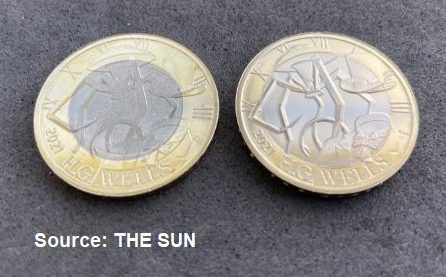
When striking £2 coins, the first step is to punch a hole through a blank planchet to create the outer section. The inner core is taken from a different metal, sized to fit inside the outer ring.
There have already been estimations that if this coin was to be sold at auction, it could fetch over £1,000! We’re going to be eagerly awaiting confirmation from The Royal Mint whether this error is genuine or not. Nonetheless, it certainly makes for interesting collecting!
This coin is yet to be individually issued, so any ‘error’ versions will have come exclusively from the 2021 UK Annual Set. It’ll certainly be interesting to see if any other stories crop up after the coin’s individual issue….
Whilst there are no identical examples to compare the H.G. Wells £2 ‘error’ to, there have been previous instances of the inner and outer sections of £2 coins not quite matching up:
Clipped Planchet

In the above image, the inner core was punched out from the end of the sheet of metal used for blanks, forming a straight or ragged edge clip.
Whilst this also occurs with monometallic coins, the pairing with an outer ring exposes a large gap which is much more noticeable.
The Royal Mint strike millions of coins each year so it is inevitable that variances will occur during the striking process and can’t always be picked up during quality control, despite the fact that this particular coin would weigh less than the standard 12g £2 coin.
Off Centre Inner Core

The inner core of this coin hasn’t been united properly prior to being struck, resulting in an off centre inner core.
Due to the way the inner and outer core are struck together with the two metals being lined up and then fused together during striking, a misalignment will mean that the inner core spills into the outer ring, as seen in the image above. There might also be a gap between the two metals on the opposing join.
Faulty Outer Ring

This particular mis-strike, shows a faulty planchet or outer ring, where the inner core is exposed.
In the image above, you can actually see the specific engineering design features where the inner core is grooved to help the metal flow bond to the outer ring and fuse during striking.
Similar to the first mis-strike we looked at, this could be caused by a clipped planchet, this time created when the outer ring was punched, however coins like this may also be caused by tampering post striking, for example by fakers trying to replace the inner core of a £2 with another coin to pass off as a rare error.
Bronze £2 Error
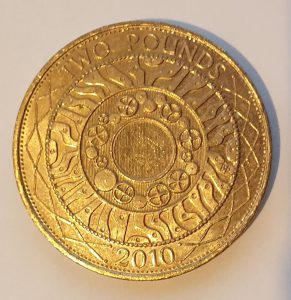
The ‘Monometallic’ £2 is described as the Holy Grail of bimetallic ‘errors’ and is the result of the nickel-brass £2 blank not having the inner core section punched out before being struck.
This means that the £2 coin is made from one full piece of nickel-brass, completely contrasting the very idea of a bimetallic coin.
A 2007 monometallic £2 was verified by The Royal Mint and in the email confirming the mis-strike it was mentioned that they had only seen 4-5 similar coins before.
However, in 2021, Change Checker was contacted by a collector called Amin who informed us that he had found this exact error coin but with a 2010 date.
After sending details of his coin to The Royal Mint for further information, it was confirmed to be genuine error as a result of the minting process.

This rare striking error is highly sought-after and coins have achieved extraordinary prices in private sales and auctions.
Whilst information of this coin’s sale has remained private, it’s certainly a very interesting story and we imagine the collector can expect to see a very impressive return on this coin…
We look forward to the individual release of the HG Wells £2 later this year and will certainly be keeping our eyes peeled for any unusual looking variations!
Have you ever come across any of these £2 error coins in your collection?
We’d love to know! Comment below.
Secure the 2021 UK Commemorative Coin Set – featuring the H. G. Wells £2!
New Pence Two Pence – how much is the 1983 2p worth?
When the UK switched to decimal coinage in 1971, it was decided that the word ‘new’ would be included in the denomination on some of our coins to avoid confusion between the new decimal coinage and the old currency.
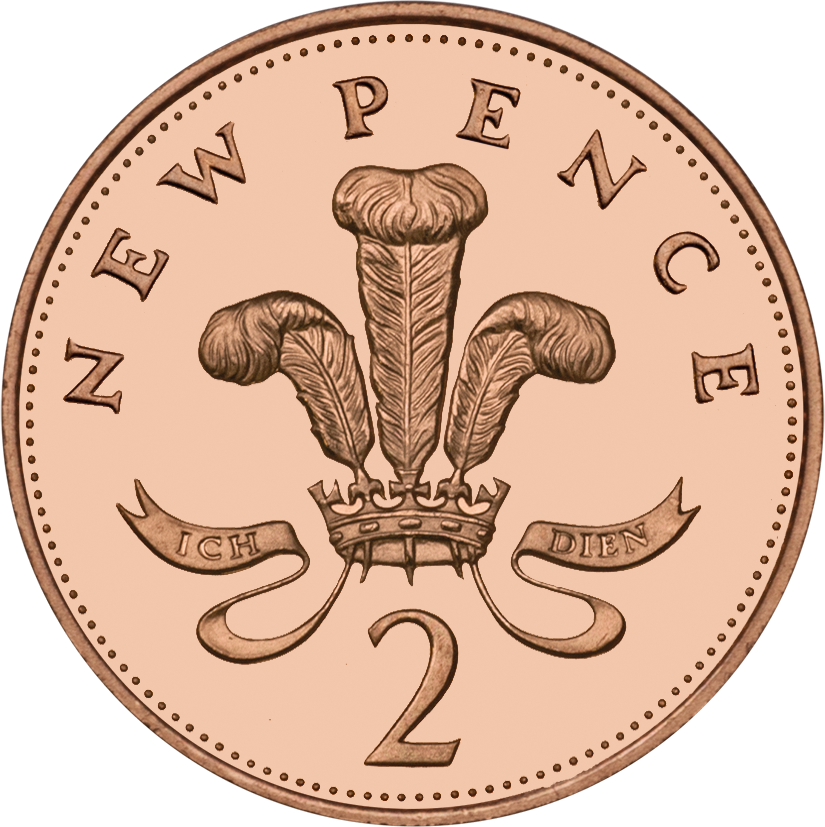
By 1982 the coins were no longer new so the word was dropped, and the 2p design changed from ‘New Pence’ to ‘Two Pence’.
A common misconception is that all ‘New Pence’ coins are rare, but in fact almost 1.5 billion of these coins were initially issued in 1971 and circulating mintage figures from decimalisation to 1981 (after which the design changed) are actually all in the hundreds of millions:
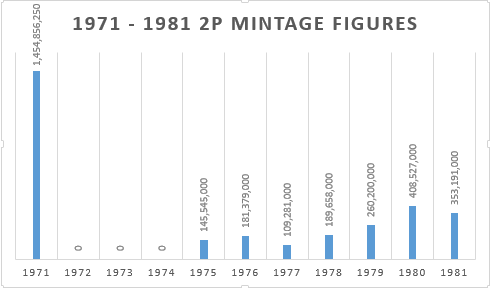
As you can see from the chart above, no 2p coins were issued for circulation between 1972 and 1974, so if you find one of these in your change it will actually be taken out of a Proof set, not intended for circulation.
1983 ‘New Pence’ Error 2p
After the design changed from ‘New Pence’ to ‘Two Pence’ in 1982, a mistake was made during production of a small number of 1983 coins…
These coins were actually struck with the old inscription – ‘New Pence’.
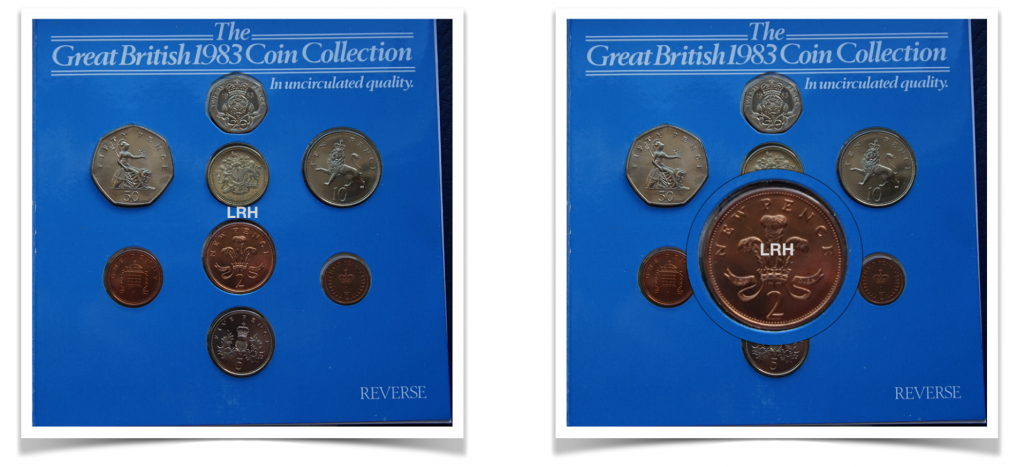
Whilst it’s not known exactly how many of these error coins were struck, in 1983 2p coins were only struck for commemorative sets and not issued for circulation. Evidence seems to suggest that affected coins were issued as part of special souvenir sets that also did not enter general circulation – although if these sets were broken open and spent then you could be in with the chance of finding one in your change…
How much is it worth?
If you’re lucky enough to find a 1983 ‘New Pence’ 2p in your change, not only does the rarity of this coin make it more collectable, but the coin was also struck in uncirculated quality – meaning it won’t have the scratches and blemishes of circulation coins.
This means a collector would most likely be willing to pay a little more to get hold of one on the secondary market.
The individual 1983 2p coin has been known to sell for £500 – £700, however the 1983 coin sets have been known to sell for over £1,000 on the secondary market!

If you do decide to look for this coin on the eBay and other secondary market sites, beware of fraudsters looking to pass off a ‘New Pence’ 2p from any other date as a rare coin.
The image below shows a 1971 2p coin listed for £2,000! Although this coin might be considered more collectable as it was the first UK 2p ever issued, this also means that nearly 1.5 billion 1971 2p coins were struck, making it the most common 2p coin issued.

Remember that it’s the 1983 version of the coin which was struck in error and this is the one you should be looking out for.
Have you ever come across a 1983 ‘New Pence’ 2p coin? Let us know in the comments below!
If you’re interested in coin collecting, our Change Checker web app is completely free to use and allows users to:
– Find and identify the coins in their pocket
– Collect and track the coins they have
– Swap their spare coins with other Change Checkers

Sign up today at: www.changechecker.org/app


